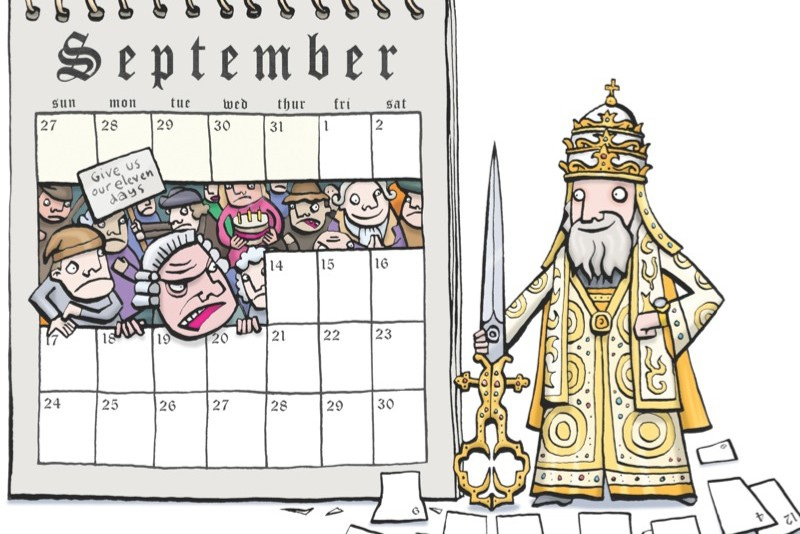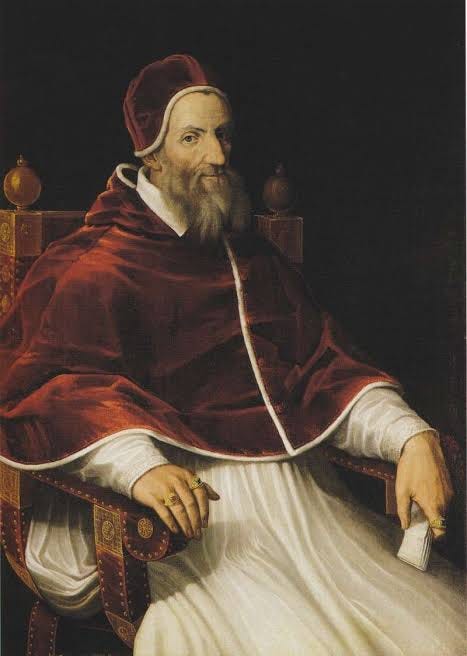The day time changed forever
441 years ago, Pope Gregory XIII introduced what came to be known as the Gregorian Calendar, by which nearly all of the world now marks its days
1582 A.D.
The end of the 16th Century was a rough time for the Catholic Church.
The Protestant Reformation was in full swing all over the West, along with the violence and unrest that accompanied it, and Rome was still sifting through its response to the crisis by implementing its own reforms that stemmed from the great Council of Trent, which had ended in 1563.
One of the men tasked with drafting the various decrees at Trent was Father Ugo Boncampagni, a diplomat hailing from Bologna who had found a bit of a late vocation – having been ordained after age 40.
Father Ugo would, soon after the Council, become Cardinal Boncompagni, and within 10 years be elevated to the Chair of Peter itself, taking the name of Gregory XIII.
Gregory XIII has come to be known for many things, several of which, sadly, have to do with one political gaffe after another. But his contribution to history which has had the largest ripple effect on the world at large – indeed, touching most human lives on Earth for well over 300 years – is one that often flies right under our noses.
Today in Papal History marks the day that Gregory XIII changed time itself by introducing what’s now known as the Gregorian Calendar.
The reason for the change – foundationally, at least – comes from the heavens themselves, specifically how the sun and the moon interact with each other to cause our days and nights, as well as our seasons.
Matthew Bunson explains it well:
The problem has always been the fact that a year cannot contain neatly organized days or months. Put simply, the interval between successive vernal equinoxes (every 365.2424 days) is approximately eleven minutes less than 365 and one quarter days. At the same time, the synodic period of the moon (i.e., the time between each full moon or new moon) is around twenty-nine and a half days, so that twelve months add up to only about 354 days. A calendar that incorporates the movements of both the sun and the moon thus becomes quite a challenge, and people of many civilizations have certainly given it their best shot.
The best and most ubiquitous calendar up to the reign of Pope Gregory XIII had been the Julian Calendar, instituted by Julius Caesar in 46 B.C. To its credit, that calendar was largely unchanged and included many things still recognizable to us today: the 12 months of the year, Leap Years, and an extra day in February in every 4th year.
However, the Julian Calendar was still rudimentary and imprecise in nature in that it simply accounted for 365.25 days, period – without regard for that pesky 11 minutes and 14 seconds that it overshot the actual timing of the Earth’s full encirclement of the sun.
As a result, like a clock that runs too fast, the timing of the Spring and Fall equinoxes fell backward by one full day every 130 years.
Bunson goes on to say, “at the time of its introduction, the Julian calendar placed the equinox on March 25. By the time of the Council of Nicea in 325, the equinox had fallen back to March 21. By 1500, the equinox had shifted by ten days.”
Aside from many confusions with time and local adjustments that ran rampant across Europe by the Middle Ages, the Church’s main concern was the proper dating of Easter, which is always placed on the first Sunday after the first full moon after the Spring equinox.
So you can imagine the consternation that had boiled over by the 16th Century, when there was widespread agreement that the dating of Easter – the most important and solemn feast day on the Church’s calendar – was off by such a wide margin.
And so, after over eight decades of preparation and planning (Catholicism never does anything quickly, of course), Pope Gregory XIII approved the findings of a commission led by the Jesuit mathematician and astronomer Christoph Clavius, thanks to the legwork done during the Council of Trent by Italian astronomer Aloysius Lilius, and promulgated the bull Inter gravissimas on February 24, 1582.
Instead of taking the recommendation of Lilius to slowly roll out the calendar changes over 10 days, Clavius and Company recommended ripping off the proverbial Band-Aid once and for all, with the date set for October of that same hear.
Here’s Bunson again:
…Ten days would be removed from the calendar. So October 4 was followed by October 15. With one act, the vernal equinox of 1583 and those that followed would occur around March 20, a date much closer to that of the Council of Nicaea. To overcome the challenge of losing one day every 130 years, the new calendar omitted three leap years every 400 years so that century years were leap years only when divisible by 400. Using this method, 1600 and 2000 were leap years, but 1700, 1800, and 1900 were not.
Of course, given the state of the Western World at that time, not everyone was keen on adopting the newfangled Papist Time, although much of Europe followed along immediately. Spain and Portugal and their colonies adopted it first, as did modern-day Poland and Lithuania, Italy, and the Holy Roman Empire. France adhered a couple of months later, but the newly Protestant lands of Germany and England would take 30 and 170 years (respectively) to agree.

The only holdouts beyond 1752, after England assented to the Gregorian Calendar, were Russia (adopted in 1917 for civic use) and the Eastern Orthodox Churches, who with few exceptions still use a revised Julian Calendar for their liturgical purposes.
At any rate, the Gregorian calendar has worked out quite well for the world – and to think that was implemented by that supposed great enemy of progress and science, the Catholic Church...
Although, it’s technically still off by 26 seconds, so by the year 4909 it’ll be a full day behind once again.
I guess whoever’s pope then can take care of it.





A worse but interesting fact is that the Catholic Church previously changed the Seventh Day Sabbath from that day (the true Sabbath) to Sunday, the first day of the week.